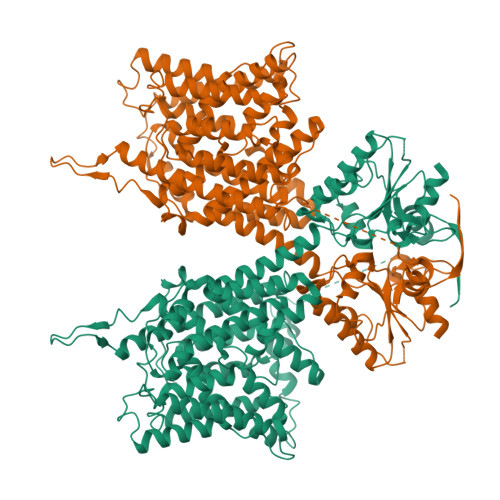Cryo-EM structures and functional characterization of murine Slc26a9 reveal mechanism of uncoupled chloride transport.
Walter, J.D., Sawicka, M., Dutzler, R.(2019) Elife 8
- PubMed: 31339488
- DOI: https://doi.org/10.7554/eLife.46986
- Primary Citation of Related Structures:
6RTC, 6RTF - PubMed Abstract:
The epithelial anion transporter SLC26A9 contributes to airway surface hydration and gastric acid production. Colocalizing with CFTR, SLC26A9 has been proposed as a target for the treatment of cystic fibrosis. To provide molecular details of its transport mechanism, we present cryo-EM structures and a functional characterization of murine Slc26a9. These structures define the general architecture of eukaryotic SLC26 family members and reveal an unusual mode of oligomerization which relies predominantly on the cytosolic STAS domain. Our data illustrates conformational transitions of Slc26a9, supporting a rapid alternate-access mechanism which mediates uncoupled chloride transport with negligible bicarbonate or sulfate permeability. The characterization of structure-guided mutants illuminates the properties of the ion transport path, including a selective anion binding site located in the center of a mobile module within the transmembrane domain. This study thus provides a structural foundation for the understanding of the entire SLC26 family and potentially facilitates their therapeutic exploitation.
Organizational Affiliation:
Department of Biochemistry, University of Zurich, Zurich, Switzerland.
















